One common approach for predicting rare events in the LOGISTIC procedure is to build a model that disproportionately over-re presents those cases with an event occurring (e.g. a 50-50 event/non-event split).
What problem does this present?
What does the Pearson product moment correlation coefficient measure?
Refer to the lift chart:
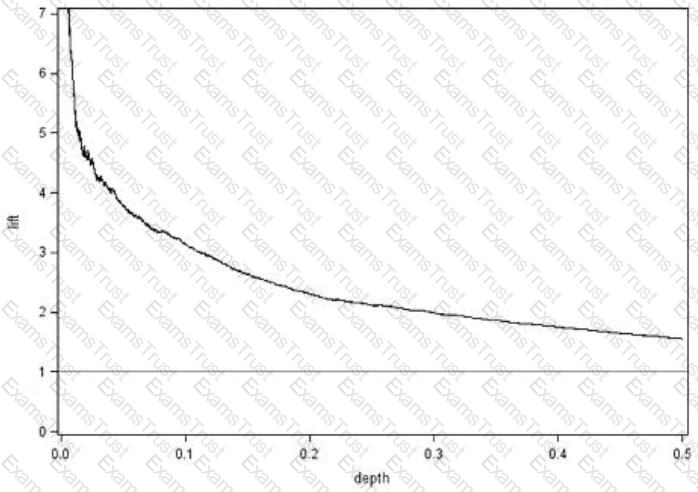
At a depth of 0.1, Lift = 3.14. What does this mean?
Including redundant input variables in a regression model can:
Refer to the ROC curve:
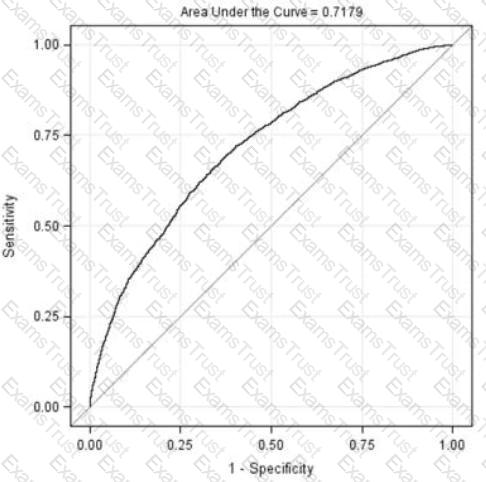
As you move along the curve, what changes?
Refer to the exhibit.
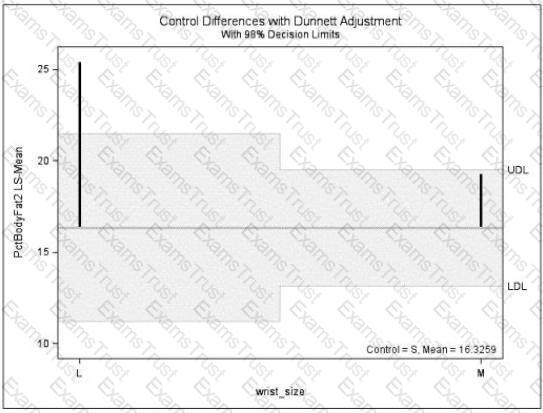
Given alpha=0.02, which conclusion is justified regarding percentage of body fat, comparing small (S), medium (M), and large (L) wrist sizes?
Which SAS program will correctly use backward elimination selection criterion within the REG procedure?
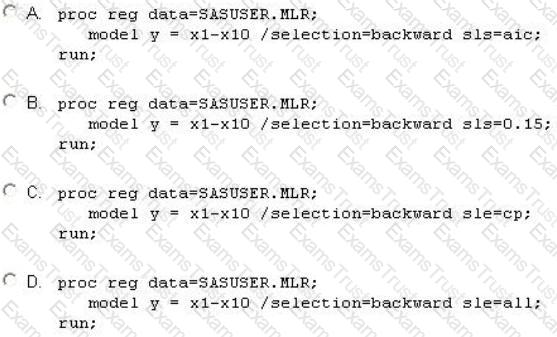
Consider scoring new observations in the SCORE procedure versus the SCORE statement in the LOGISTIC procedure.
Which statement is true?
Which SAS program will detect collinearity in a multiple regression application?
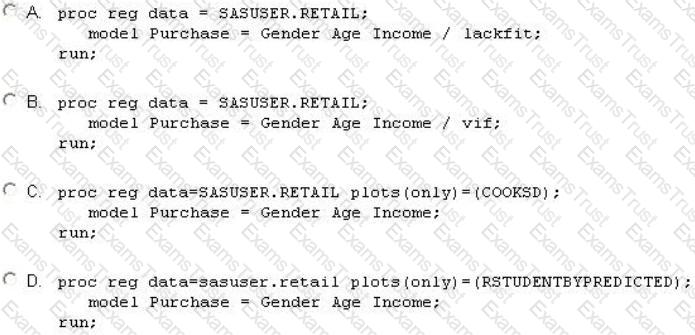
Which statistic is based on the maximum vertical distance between the primary event EDF and the secondary event EDF?
This question will ask you to provide a missing option.
A business analyst is investigating the differences in sales figures across 8 sales regions. The analyst is interested in viewing the regression equation parameter estimates for each of the design variables.
Which option completes the program to produce the regression equation parameter estimates?

The selection criterion used in the forward selection method in the REG procedure is:
In order to perform honest assessment on a predictive model, what is an acceptable division between training, validation, and testing data?
An analyst generates a model using the LOGISTIC procedure. They are now interested in getting the sensitivity and specificity statistics on a validation data set for a variety of cutoff values.
Which statement and option combination will generate these statistics?